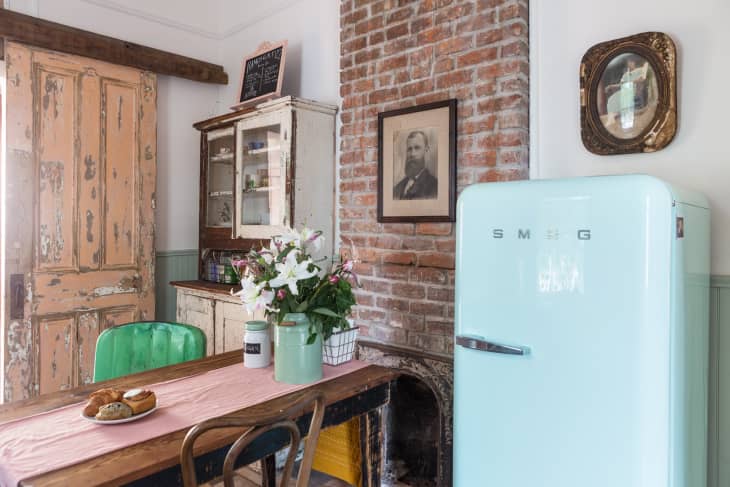Shopping For Salvaged Materials: Crucial Questions To Ask Before You Buy

There’s no doubt that using vintage and salvaged materials is a bigger hassle than buying new materials. So why bother? If your decor leans toward a vintage look, it’s often the only choice to get the style you want. Plus, salvaged materials are usually less expensive than new, and often better quality. The practice also keeps items out of the landfill, and saves on the production and transportation of new materials, so it’s far better for the environment. And despite the challenges, salvaged materials allow you to create a unique, difficult-to-replicate interior from items with history and soul.
If I’ve successfully convinced you that salvaged materials are worth the trouble, you should know that there are different things to consider than when buying brand-new, off-the-shelf elements. Let’s say you’re wandering the aisles at your local salvage shop, and you spy a treasure. Here are some questions you should consider when decided whether you should bring it home:
Size and Function
Question #1: Does the item fit your space and needs? Measure twice, buy once.
I keep an electronic list of items and measurements (in Google Keep, but even an email to yourself would work) for pieces that I’m looking for, so that I can pounce if I come across a likely candidate. I also carry a small tape measure in my purse at all times. Some places allow you to put items on hold, or return them if they don’t work, but you don’t always have this luxury, so be prepared.
→ Secondhand Rehab: 10 Architectural Salvage Stores
Condition
Question #2: Are there stains or damage? If so, can you clean it, repair it, or live with it?
What’s fixable and what isn’t obviously depends on your skill level and the amount of time you’re willing to put in. My vintage sink was pretty stained and grimy when I bought it, but I figured it would clean up well. After I’d scrubbed the heck out of it (with help from these instructions for cleaning porcelain), I was left with some faint rust stains in the bowl, and other minor wear and dings, but I’ve decided that those are character. Accepting imperfections is part of using salvaged materials, and that wear and tear sometimes even tells an interesting story about the previous life of an object. If I wanted a pristine sink, I’d buy a new one, but I also don’t want anything too damaged. The line between character and busted is one you’ll have to work out for yourself.
Materials
Question #3: Is it safe to bring inside the house?
Lead and asbestos are two big concerns. If you want to be sure to avoid these hazards, steer clear of any painted wood, or any wood with leftover dried glue texture. Vintage paint that’s intact and in good condition is possibly safe as long as you don’t sand it or lick it, but there are swab lead testing kits if you need to be sure. Despite the problems with lead in water in the news lately, people are actually more likely to get lead poisoning from old paint, so it’s better to be safe than sorry.
If you’re buying a vintage sink or tub with fixtures attached, the fixtures could leach problematic levels of lead into the water. My favorite salvage place has stickers warning of possible lead on the vintage fixtures, but if you’re buying an old sink off of craigslist, it might not come with warnings. Depending on the fixture and the water in your area, it could be completely safe, but the only way to know for sure is hooking it up and testing the water. So while I love the look of old fixtures, they may not be worth the risk.
Installation
Question #4: Does the item come with everything you’ll need to install it?
This can be much more non-trivial than you expect. Does that vintage wall-mounted sink come with the hardware you’ll need to attach it to the wall? Mine didn’t, and figuring out how to hang it was quite challenging! The missing brackets on some other porcelain bathroom fixtures that I thought would be easy to hang also required some serious garage problem-solving.
For sinks and tubs, consider fixture holes. Sinks with separate hot and cold faucets may look charming, but they’re less so when you’re washing your face with scalding or freezing water. And even the bridge faucets made to solve this problem may not work for non-standard hole distances. Measure and research as much as you can before you buy!
Realize that it may take more time and effort than you expect to install a piece, but if you really want to, you can make it happen. If you’re not up to the DIY-challenge, you can enlist a friend or family member, or hire a professional.
Quantity
Question #5: Is there enough, or can you compromise?
If you want matching tile throughout your bathroom (most of us do), you may have to leave behind that pile of vintage tile that doesn’t contain quite enough for the room. Same goes for the kitchen cabinets or knobs that won’t cover your kitchen needs. But maybe two doors at opposite sides of your house don’t need to match exactly. When searching for vintage brass doorplaces to replace ones that were missing in our house, I compromised and used some that were different than the originals in our house. If you don’t mind, chances are neither will anyone else (and if they do, who cares?)
Do you use salvaged materials in your home? What are your best tips and advice?